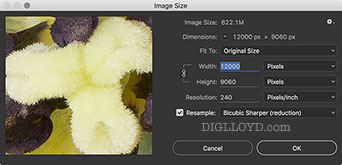Rumors of High Megapixels True or Not, Oversampling for Image Quality Makes Sense: 109 Megapixel Tulips via Sony RX100
Get Sony Cyber-shot DSC-RX100 at B&H Photo.
Written over three years ago, I rerun this blog entry nearly verbatim because it is more relevant than ever. It remains particularly relevant to full-frame cameras, since M4/3 and APS-C have already hit the wall (or nearly so), as I discussed yesterday.
A 70 or 80 or 150 megapixel full frame sensor makes sense, a lot of sense notwithstanding myopic “megapixels don’t matter” thinking. High pixel counts make sense for a M4/3 or APS-C sensor too; indeed, it already exists already as pixel shift mode in the Olympus E-M5 II. But the limits with smaller sensors are much more immediate than with full frame, and ultimately light gathering is about sensor area. Combining true-color shift modes with high pixel density has even more potential for extending the dynamic range and lowering the noise floor even at very high pixel densities.
…
Capturing an image at a much higher resolution than needed for the end result is of great value in obtaining a result free of digital artifacts and with higher per-pixel quality.
This oversampling is true for images just as much as it’s true for audio.
I’ve discussed the oversampling concept before, because the future involves DSLRs in the 100+ megapixel range. Not for the sake of resolution alone, but for image quality.
DSLRs ought to come on the market relatively soon whose image quality will be spectacular even without downsampling to lower resolution.
But the oversampling will make possible images in the 70 megapixel range (from ~140 megapixel sensors) that will rival any medium format camera available today. Pick any numbers you like, the idea remains the same.
Sensor existence proof — Sony RX100

Even native pixels without downsampling should be excellent, the Sony RX100 being an existence proof (its main failing being a weak lens).
The Sony RX100 is a 20-megapixel camera whose sensor if scaled to full-frame DSLR at the same pixel density would be 148 megapixels. Yet its per-pixel image quality is first-rate.
Still, let’s make a point of complaining that the RX100 sensor quality is not good enough, and assume we would downsample those 148 megapixels in half (70.7% linearly) to reach 72 megapixels— would it look pretty awesome? Indeed it does.
The stitched image below is close to our theoretical size— 109 megapixels. Even on a per-pixel basis (before any downsampling), its quality is excellent, with proper ETTR exposure only making it better.

The crop below is actual pixels from the 109 megapixel image above, showing that if we had a DSLR with simply the same per-pixel quality, it could be stunning. However, diffraction will become an issue as early as f/3.5 or so, and depth of field will be a serious challenge.

The image doesn’t need downsampling to fix any quality issue (it’s already excellent). But this might not always be the case (noise, poor exposure situations, etc).
Shown below is an actual pixels crop from the 54-megapixel downsampled image (downsampled from the 109-megapixel image).





























